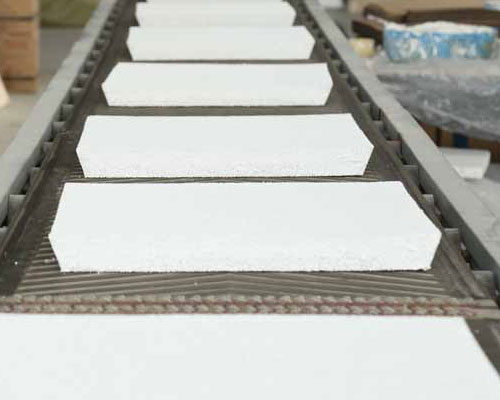Filters for molten metals are preferably made by foam reproduction technology, a common method used to manufacture mesh ceramic foams. To form the filter, foam is coated with a ceramic slurry, preferably polyurethane foam, then dried and fired. During firing, the polyurethane foam inside the ceramic coating evaporates, but the ceramic structure remains, resulting in an exoskeleton-like ceramic foam with hollow voids. The molten metals filter structure is essentially a connection of pillars, with pores located around and inside these pillars.
The size used depends on the ceramic material required for the chosen application. One must have sufficient properties in the final product to withstand specific applications, and must have sufficient structural and/or mechanical strength to withstand specific high-temperature conditions. In addition, the slurry is preferred to have a relatively high fluidity and preferably consists of a water suspension of ceramic used in the filter. Usually, the slurry contains water. Additives such as adhesives and surfactants can be used in the slurry.

Impregnated soft foam material with an aqueous ceramic slurry to coat fibrous mesh and fill void spaces. In general, it is preferred to dip the foam repeatedly into the slurry and to compress the foam between dips to ensure complete impregnation.
The impregnated foam is preferably compressed to discharge 25-75% of the slurry, leaving the fibrous mesh portion coated with it. In continuous operation, impregnated foam can be passed through a preset roller to discharge the desired slurry from the foam and leave the desired amount of impregnation in it. This can be done manually by simply squeezing the flexible foam material to the desired extent. At this stage, the foam is still flexible and can form configurations suitable for specific filtration tasks, i.e. curved plates, hollow cylinders, etc. The foam formed must be held in place by conventional means until the ceramic is sintered. The impregnated foam is then dried for 2 minutes to 6 hours by air drying or accelerated drying at 35° C to 700°C. After drying, the material is heated at high temperatures to bond the ceramic particles that form the fibrous mesh.
The resulting product Filters for Molten Metals is a fused ceramic foam with an open structure characterized by multiple interconnect voids surrounded by a ceramic mesh. Ceramic foam can have any configuration required, based on the configuration required for a particular molten metal filtration process.

